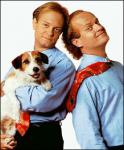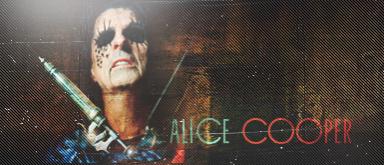
|
|
|
|
|
|
Tossed Salad & Scrambled Eggs
Join Date: Jan 2009
Location: ATX & OPKS
Casino cash: $-38004
|
*****The Patrick Mahomes Thread*****
IT ****ING HAPPENED
OP UPDATE: Because of all the interest in this thread, I've place all of the video content of Patrick Mahomes II's college career, and draft day goodness into a single post that can be found here. Enjoy! Last edited by Dante84; 05-17-2017 at 09:40 AM.. |
|
Posts: 20,076
           |

|
|
|
#31906 |
|
Colorado Chief Fan
Join Date: Feb 2006
Casino cash: $6053147
|
Other fans are going to make a big deal out of anything they think could bother or hurt Mahomes, part of the deal.
BUT OUR FANS doing it is bullshit! I can understand expressing concern but some are WAY over the top. We should NOT be joining in on that shit. I have a brother, who I love very much but drinks way to much and makes an ass out of himself and me at times. I get pissed and talk to him about it but I love him and always will. No way do you cut your own brother out of your life. |
|
Posts: 5,635
           |

|
|
|
#31907 | |
|
MVP
Join Date: Sep 2005
Location: Austin,TX
Casino cash: $4577505
|
Quote:
|
|
|
Posts: 11,913
           |

|
|
|
#31908 | |
|
Supporter
Join Date: Nov 2006
Casino cash: $2305783
|
Quote:
__________________

|
|
|
Posts: 5,696
           |

|
|
|
#31909 |
|
I'll be back.
Join Date: Nov 2002
Casino cash: $2840478
|
__________________
Chiefs game films |
|
Posts: 288,119
           |

|
|
|
#31910 | |
|
The End of All Your Dreams
Join Date: Apr 2006
Casino cash: $571241
|
Quote:
|
|
|
Posts: 49,053
           |

|
|
|
#31911 |
|
Chiefs
Join Date: Feb 2009
Casino cash: $2606009
|
|
|
Posts: 23,779
           |

|
|
|
#31912 | |
|
Please squeeze
Join Date: Jul 2003
Location: Clinton, MO
Casino cash: $1694644
|
Quote:
|
|
|
Posts: 66,702
           |

|
|
|
#31913 | |
|
Perpetual Mediocrity
Join Date: Jan 2006
Casino cash: $3562783
|
Quote:
In a decade neutrals will look back at his interception total this year and wonder what the hell happened. |
|
|
Posts: 51,717
           |

|
|
|
#31914 |
|
The Insider
Join Date: Jan 2004
Location: Lake of the Ozarks
Casino cash: $448752
|
A few dropsies and the Donks having the ball the entire 2nd quarter kind of skews last night.
|
|
Posts: 51,019
           |

|
|
|
#31915 |
|
Tossed Salad & Scrambled Eggs
Join Date: Jan 2009
Location: ATX & OPKS
Casino cash: $-38004
|
Game of inches.
If Mahomes' elbow doesn't get brushed on that deep ball to Tyreek, the pass hits him in stride that he carries to a long-ass TD. Instead, it fell short and hit the ground. If his elbow doesn't get touched, the entire narrative is different coming out of that game.
__________________
.  . .
|
|
Posts: 20,076
           |

|
|
|
#31916 |
|
Rockin' yer FACE OFF!
Join Date: Feb 2003
Location: Omaha, Nebraska
Casino cash: $2255437
|
Patience of a saint, never throws anyone under the bus, never gets mad or loses it. He'll be fine...
__________________
 We have a million reasons for failure, but not one excuse...    Die Donks, DIE!! Die Donks, DIE!!  Holy Crap fellas!!! We did it!!! THREE TIMES!!! 
|
|
Posts: 26,448
           |

|
|
|
#31917 | |
|
In Search of a Life
Join Date: Aug 2008
Casino cash: $244497
|
Quote:
I used the word spoiled and I stand by it. Many of us. We treated a few game slump as the end of the world and called for the heads of everybody from veach to spagnuolo. Pissing off family members of a generational talent for shits and giggles is the kind of thing fans do when they are too comfortable. Because we think mahomes will love us no matter what. I mean, thank god we didnít act like this before he signed his contract. |
|
|
Posts: 49,824
           |

|
|
|
#31918 |
|
In Search of a Life
Join Date: Jan 2010
Location: L.A.
Casino cash: $1134284
|
Well if our words pissed off the defense to play the way they're playing now... then I guess we all deserve a pat on the back for being Tuscaloosa fans (as Nate Taylor calls it)?
|
|
Posts: 27,723
           |

|
|
|
#31919 |
|
I'll be back.
Join Date: Nov 2002
Casino cash: $2840478
|
 
__________________
Chiefs game films |
|
Posts: 288,119
           |

|
|
|
#31920 | |
|
Man of Culture
Join Date: Aug 2000
Location: Far Beyond Comprehension
Casino cash: $-957187
|
Quote:
Spoiler!
Really puts shit into perspective rereading this article
__________________

|
|
|
Posts: 42,676
           |

|


|
|
|